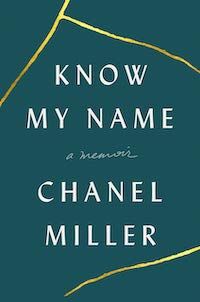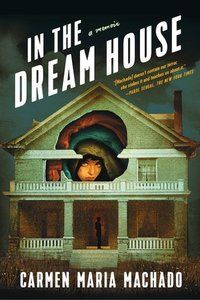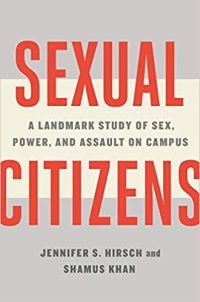One of the first posts I ever wrote for this site was on nine books that are a call to action against rape culture. There were plenty to choose from at the time and, in the three years since, the amount of brilliant work out there has only grown. There have been at least 15 books tackling the topic in those three years that have made it onto my list of favorites and, just this past month, I was blown away by Jodi Kantor and Megan Twohey’s She Said, a book on how they revealed the truth about Harvey Weinstein’s behavior toward women. In so many of these books, however, the lines have been clear. The reported behaviors have been truly monstrous. The ability to distinguish between angels and monsters simple. But as I’ve continued to write about rape culture, and about everything that phrase encompasses, I’ve been hungry for more nuance. For more of an interrogation into the cultural elements that contribute to rampant sexual assault. For an acknowledgment that bad behavior doesn’t have to be illegal to be wrong. I feel like these are conversations we have just begun to have more openly and, recently, I’ve read three books that have also filled that need. There are so many assumptions people carry about survivors. About perpetrators. About domestic abuse. About the aftermath of assault. The books below are the answer to those misguided assumptions.
Know My Name by Chanel Miller
I first borrowed Know My Name from the library, but when I learned I would be receiving another copy through my Feminist Book Club subscription, I was thrilled. I’d known within just a few pages that I needed my own copy of this book, that I would want to dog-ear pages and underline passages and recommend it to everyone I knew. Chanel Miller, formerly known as Emily Doe, is the woman who was sexually assaulted by Stanford student Brock Turner in 2015. Her victim impact statement later went viral. Her memoir is the answer to all of the questions others have ever had about why sexual assault survivors don’t report. The bulk of the book is taken up by both the immediate and the ongoing aftermath of Miller’s assault. We learn what she has to go through in the pursuit of “justice,” and we learn how that one night—and the ensuing criminal justice process—affected her. Miller’s book also interrogates the lie of the “perfect victim,” forcing readers to see Miller as a whole person, one who, despite her faults, was absolutely not at fault that one terrible night.
In the Dream House by Carmen Maria Machado
After reading the gorgeous Her Body and Other Parties, I was prepared to follow Machado to the ends of the earth. So I was stoked to learn that her next project was a memoir. In the Dream House is an unconventional memoir in that it’s built using short vignettes organized around conventional tropes, genres, and story elements. In this way, Machado shows that stories of domestic abuse and intimate partner violence don’t fit neatly into any one box. Despite the unconventional framework of the book, Machado’s story still follows a clear arc that shows how her relationship with one woman shifts from idyllic to nightmarish. The first small instance of physical violence she recounts is stunning in its cruelty. But what is most frustrating is the fact that, due to the invisible nature of the mostly psychological abuse she endures within the context of this relationship, there are those in Machado’s life who don’t afford her experiences the gravity and sympathy they deserve. “Most types of domestic abuse are completely legal,” she writes about a hundred pages into the book. It’s a sentence that perfectly encapsulates the shades and shadows surrounding the conversations around sexual assault.
Sexual Citizens by Jennifer S. Hirsch and Shamus Khan
The last book on this list isn’t out until January. It’s different from Miller and Machado’s book in that it isn’t a memoir. Instead, it’s built around a study conducted by two professors at Columbia University on campus sexual assault. I include it here because of the ways in which it parses out the complexity of the circumstances that surround and enable sexual assault, showing why single-pronged “solutions” like affirmative consent education are not enough. In addition, it moves beyond the “good guy/predator” dichotomy in a way that could perhaps someday lead to prevention programs that are significantly more effective. There’s a lot to appreciate in this meaty text, from the exhaustive research to the interview snippets that give readers a glimpse of what students are really thinking and experiencing. Look out for it in mid-January!



